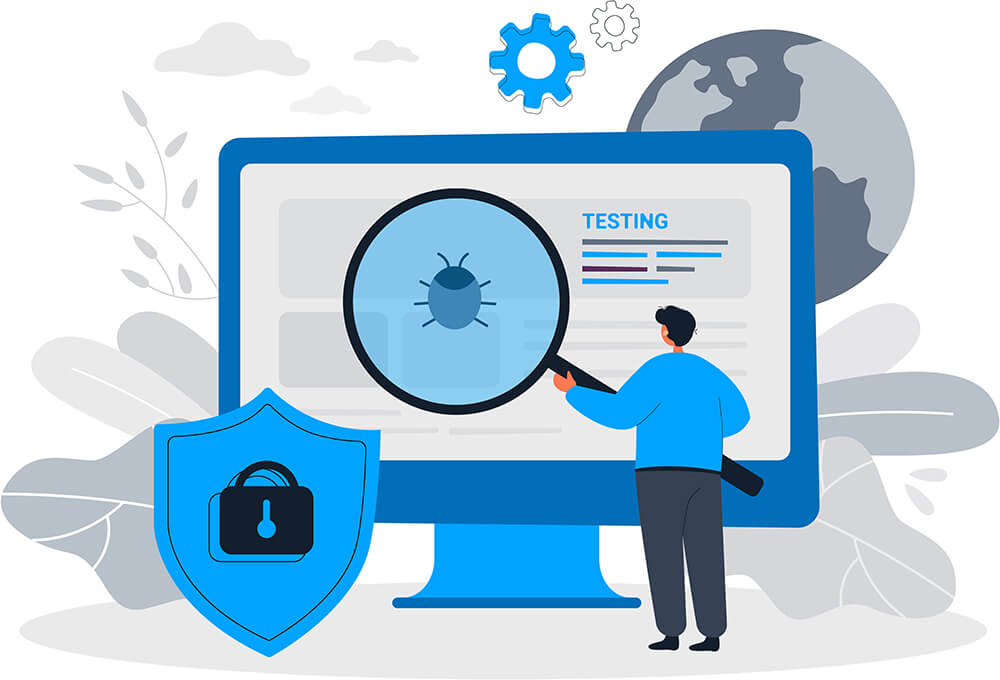In today’s digital age, software has become the backbone of businesses, driving operations, customer engagement, and productivity. However, maintaining software after deployment is crucial to ensure it continues functioning efficiently, meets evolving business needs, and remains secure. Software maintenance services cover a broad range of activities, from troubleshooting bugs to adapting applications for changing environments. This blog dives deep into the importance of software maintenance, its different types, and best practices, while also discussing how related services—like software testing—complement maintenance efforts.
What Are Software Maintenance Services?
Software maintenance services refer to the processes involved in managing, updating, and improving software after it has been deployed. These services ensure the software remains functional, secure, and aligned with business objectives over time.
Software maintenance is not merely about fixing bugs but also encompasses adapting software to changes in technology and the business landscape. It involves regular updates, security patches, enhancements, and performance tuning to maximize efficiency.
Why Are Software Maintenance Services Critical?
- Prevents Downtime: Regular maintenance reduces the risk of unexpected failures, ensuring seamless operations.
- Improves Software Performance: Periodic updates and code optimizations boost performance and responsiveness.
- Enhances Security: Frequent patching keeps the software safe from emerging cyber threats and vulnerabilities.
- Adapts to Changes: Software evolves with changing market trends, technology upgrades, and regulatory requirements.
- Ensures User Satisfaction: Smooth, bug-free software improves user experience, building trust and loyalty.
Types of Software Maintenance
1. Corrective Maintenance
- Involves identifying and resolving defects or bugs discovered after the software’s release.
- Ensures software functions as expected by fixing glitches and errors.
2. Adaptive Maintenance
- Adapts software to changing environments, such as OS upgrades, hardware changes, or regulatory updates.
- Keeps the software compatible with external systems and technologies.
3. Perfective Maintenance
- Focuses on enhancing performance by optimizing the software’s functionalities and usability.
- Involves adding new features or improving existing ones based on user feedback.
4. Preventive Maintenance
- A proactive approach that anticipates potential issues and addresses them before they affect the system.
- Includes monitoring, code refactoring, and implementing security patches to prevent downtime.
Key Benefits of Software Maintenance and Support Services
- Extended Software Lifespan: Prolongs the usability of software, delaying the need for replacements.
- Enhanced Security: Reduces vulnerabilities by patching security gaps regularly.
- Cost Savings: Timely maintenance prevents costly disruptions and minimizes the need for major overhauls.
- Scalability and Flexibility: Adapts the software to new business needs without requiring redevelopment.
- Improved User Satisfaction: Regular updates keep the software aligned with user expectations and needs.
Role of Software Testing in Maintenance
Software testing services play a crucial role in ensuring that maintenance activities do not introduce new defects into the system. Testing ensures the integrity and performance of the software remain intact after updates and modifications.
Types of Software Testing for Maintenance
- Regression Testing: Ensures that new changes do not affect the existing functionality of the software.
- Security Testing: Verifies that updates have not exposed new vulnerabilities or weakened security.
- Performance Testing: Monitors software speed, stability, and responsiveness after updates.
- Automation Testing: Automates routine testing tasks, speeding up the maintenance process.
By integrating software maintenance with rigorous testing services, businesses can ensure smooth operations and minimize the risk of software glitches.
Best Practices for Software Maintenance
- Plan Proactively: Establish a maintenance schedule to monitor performance and apply patches regularly.
- Document Changes: Maintain detailed logs of updates, bug fixes, and other changes for future reference.
- Automate Processes: Use automation tools for routine tasks, such as testing and patch management, to save time and reduce human errors.
- Monitor System Health: Continuously track key metrics to identify performance bottlenecks early.
- Involve Stakeholders: Engage developers, users, and business leaders to align maintenance efforts with business goals.
Challenges in Maintaining Software
- Managing Legacy Systems: Updating older software systems can be complicated and may require significant resources.
- Security Threats: New vulnerabilities emerge frequently, demanding constant vigilance.
- Cost Management: Maintaining software over time can become costly if not well-planned.
- Compatibility Issues: Adapting software to changing environments without disrupting operations is challenging.
- Ensuring Minimal Downtime: Maintenance tasks, especially major updates, must be performed without affecting service availability.
Conclusion
Effective software maintenance is vital to sustaining the functionality, security, and performance of your applications. Impressico Business Solution offers tailored software maintenance and support services, ensuring that your software is always aligned with evolving business needs.
With our expertise in both software testing services and maintenance, we proactively monitor and enhance your software while addressing any emerging issues. Our team ensures that updates, bug fixes, and security patches are implemented smoothly to minimize disruptions. Whether you need adaptive maintenance to integrate new technologies or preventive maintenance to safeguard against future risks, we are here to help you stay ahead.

